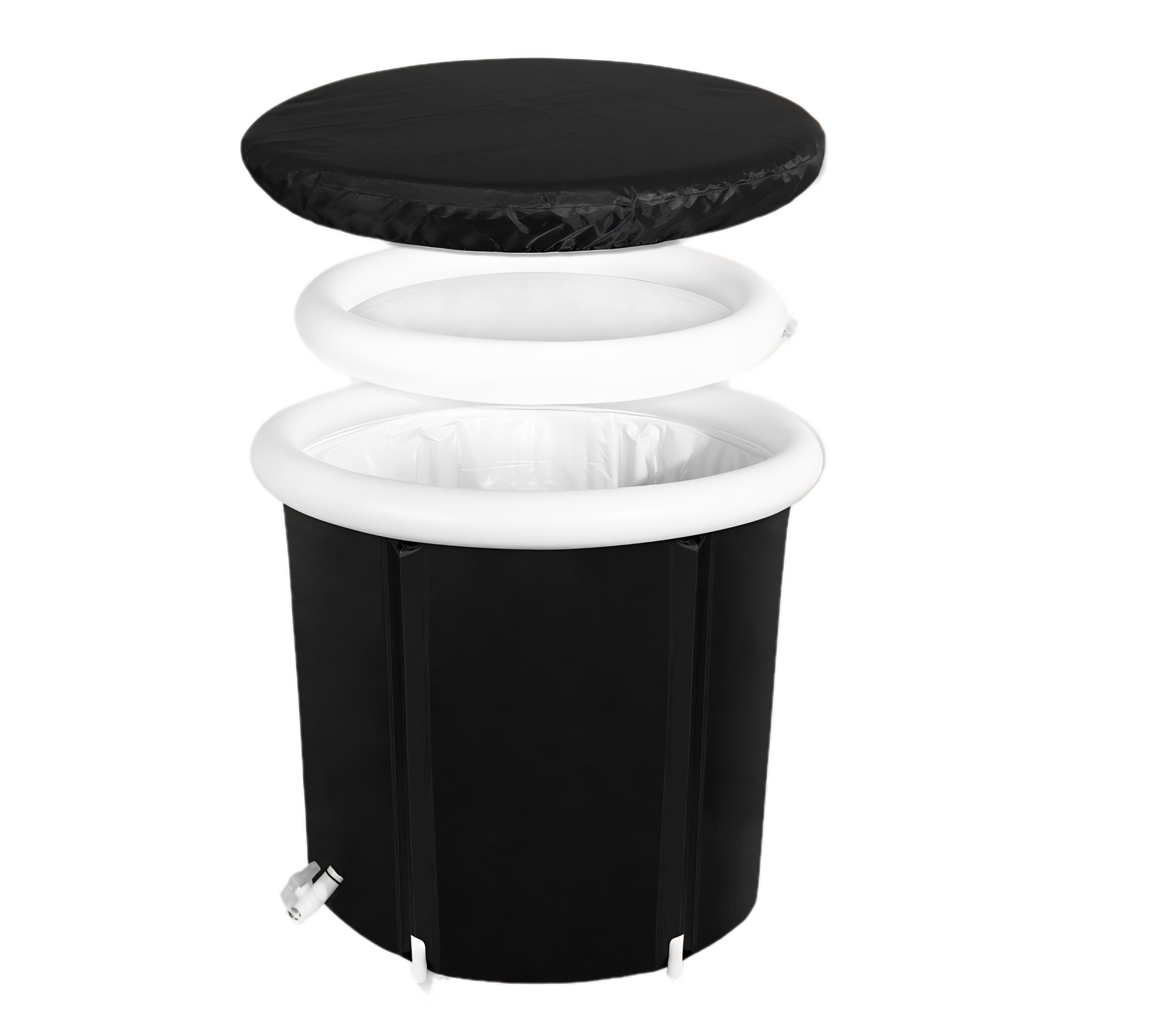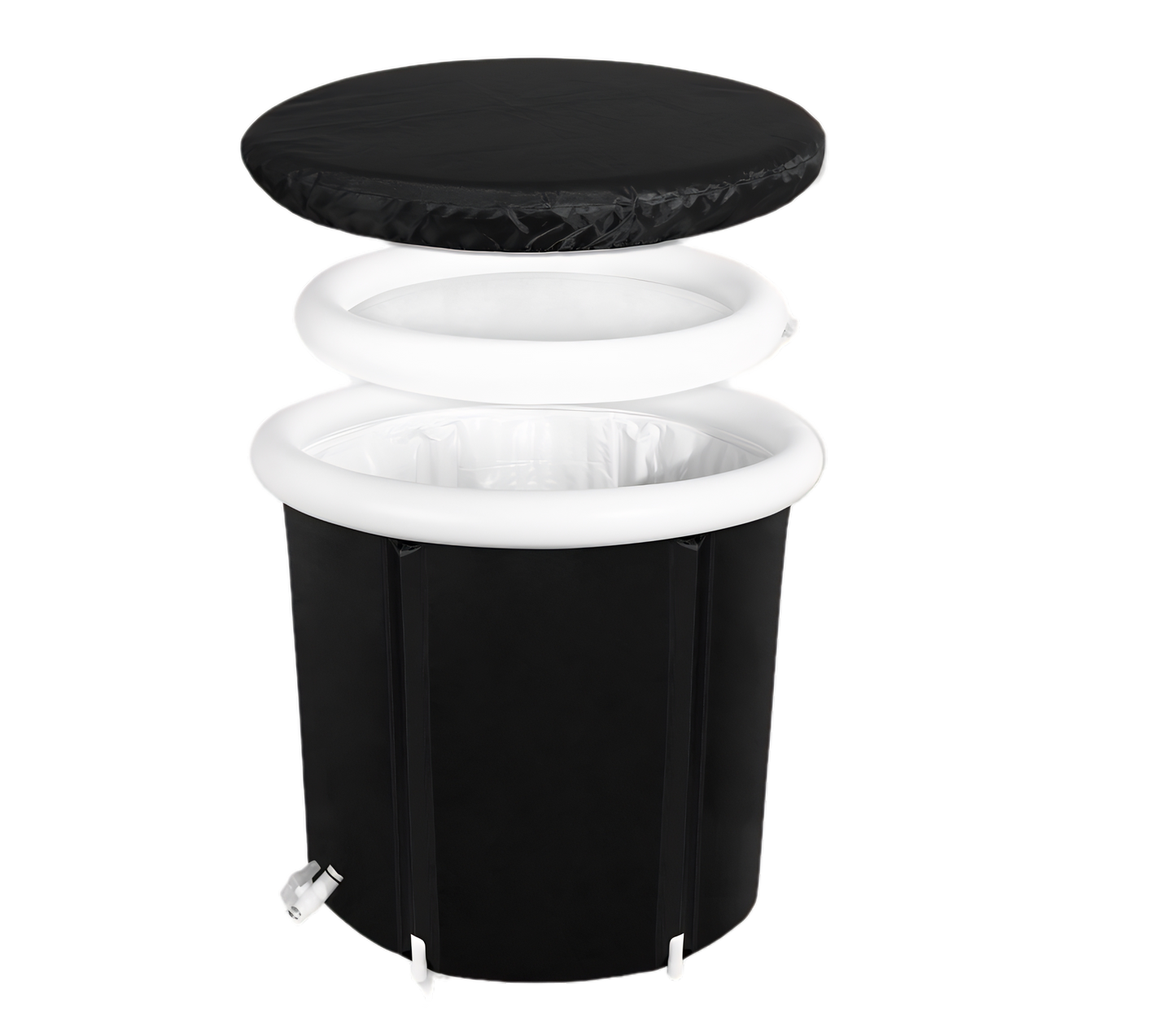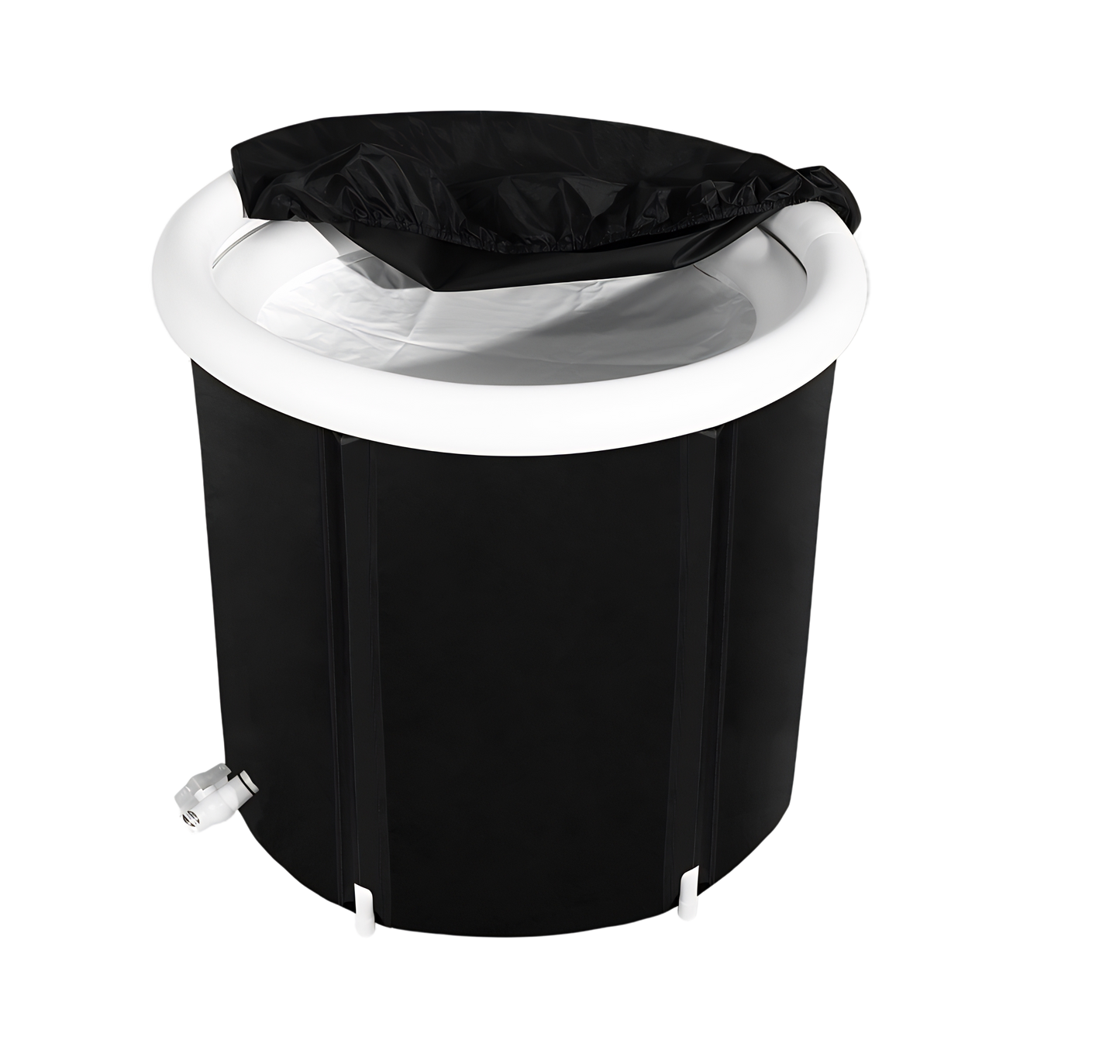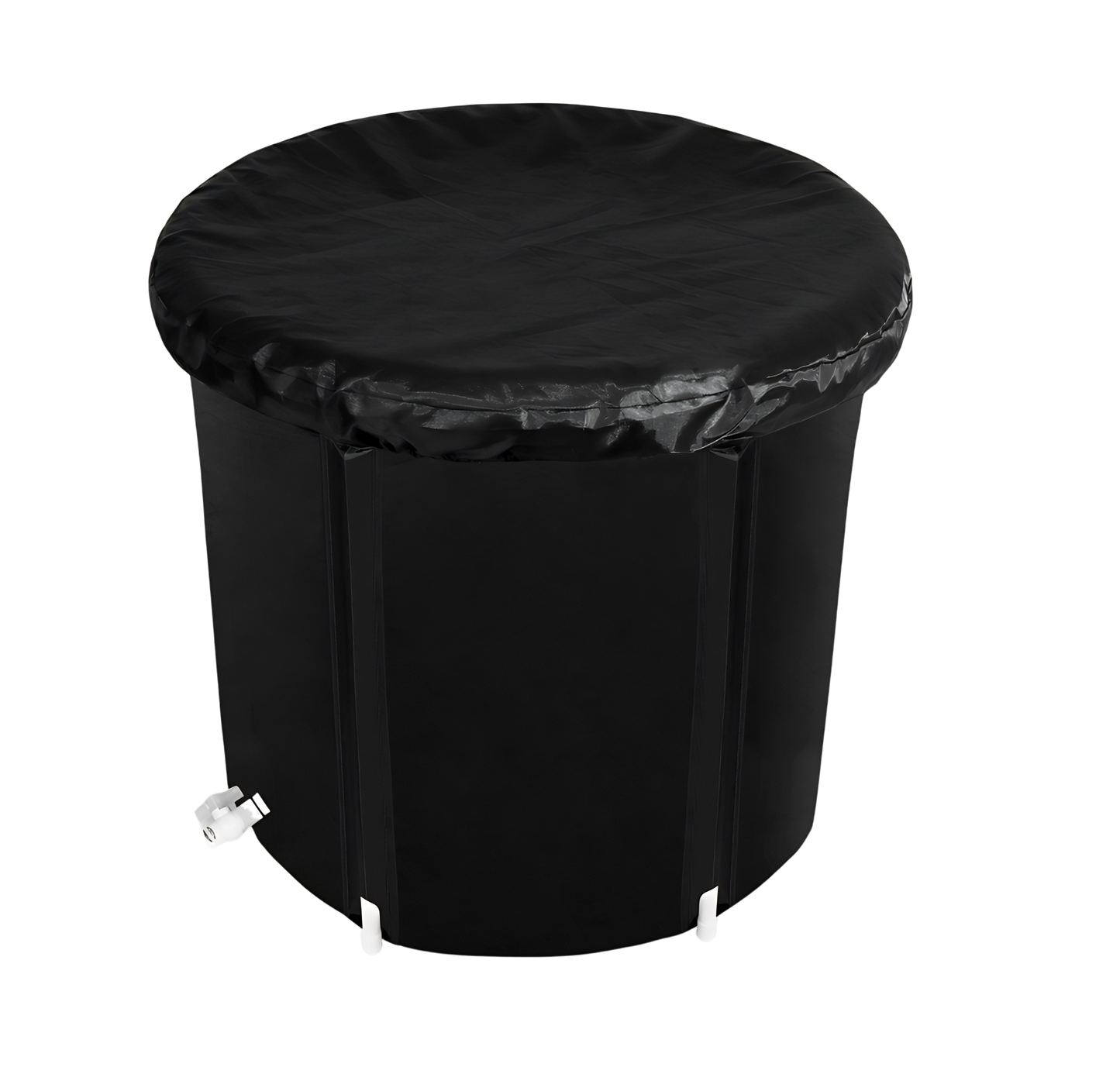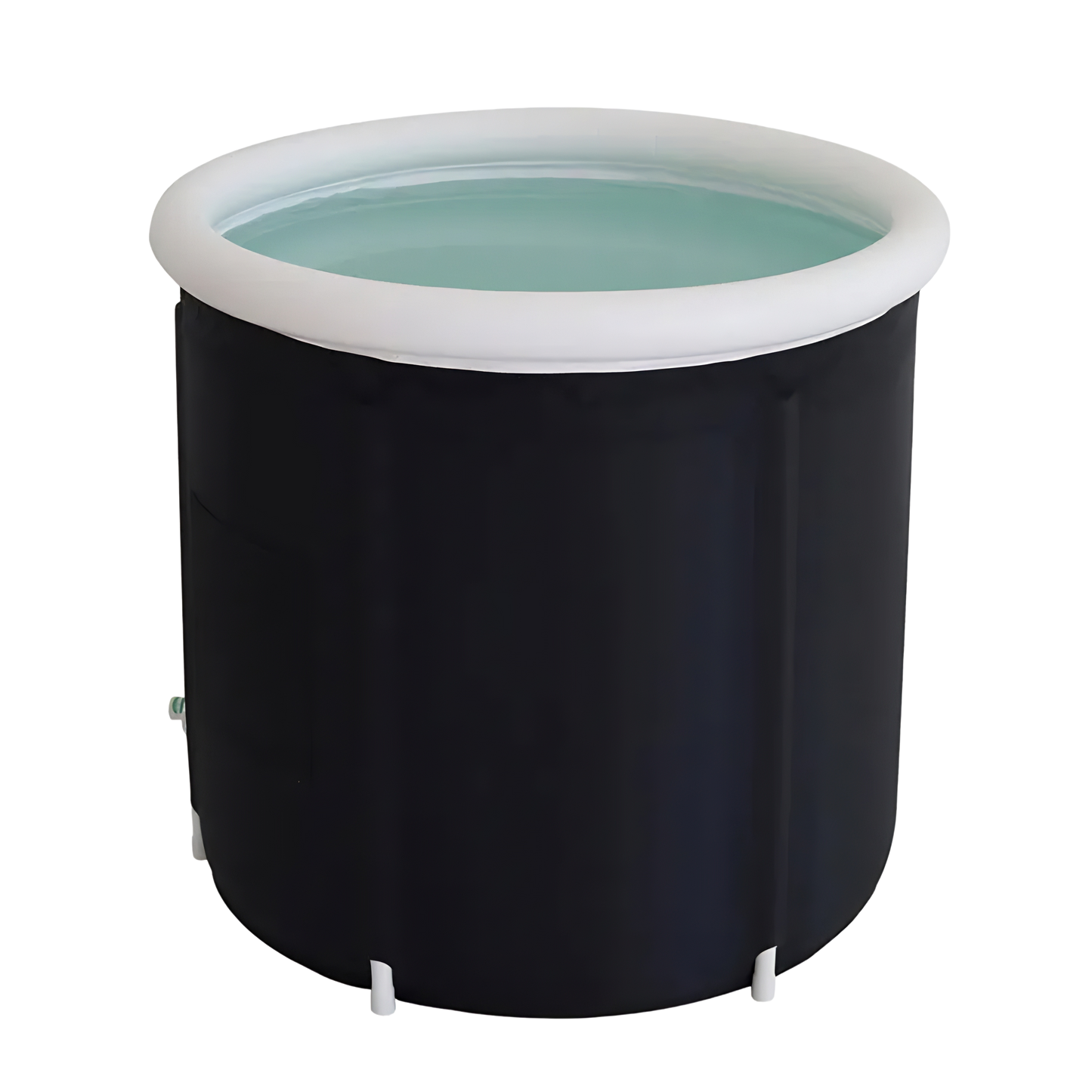Welcome to a comprehensive guide on ice baths during pregnancy. In this article, we will explore how ice baths can benefit expectant mothers and evolve through the different stages of pregnancy.
Ice bath therapy has gained popularity for its potential to provide relief from discomforts and promote overall prenatal health. We will discuss the benefits, risks, safety tips, and considerations for each trimester, as well as evaluate the evidence on perineal pain relief.
So, let's dive into this icy world and discover how prenatal ice bath therapy can support you during your pregnancy journey., despite the harshness of the environment.

Key Takeaways
- Ice bath therapy can offer relief from common pregnancy discomforts such as back pain and swelling.
- It can promote muscle recovery and reduce inflammation.
- Safety precautions and temperature control are essential when practicing ice bathing during pregnancy.
- Consult with a healthcare professional before incorporating ice baths into your prenatal routine.
- Pay attention to your body's signals and make informed decisions about ice bath practices.
Understanding Ice Bath Therapy and Prenatal Health
Ice bath therapy, often referred to as cold water immersion or cold plunge therapy, involves submerging the body in chilled water, usually ranging from 10 to 15 degrees Celsius. This practice, popular among athletes for recovery, involves a brief duration of exposure to these cold temperatures. Such controlled cold therapy can trigger a range of physiological responses in the body.
Interestingly, ice baths during pregnancy have become a topic of discussion. While traditionally associated with sports recovery, the potential benefits of this cold plunge practice for pregnant women are being explored. It's important to note that with proper guidance and precautions, engaging in ice bath therapy while pregnant can be considered, offering a unique way to experience the therapeutic effects of cold immersion during this special time.
Understanding the Physiological Impact of Ice Bath Therapy on Pregnant Women
During pregnancy, ice bath therapy can provide pregnant women multiple physiological benefits. The cold water immersion can help alleviate inflammation and swelling that often accompany the different stages of pregnancy. Additionally, it may help reduce discomforts like back pain, joint pain, and muscle soreness, which are common during this transformative period.
It's important to note that ice bath therapy should always be approached with caution and under the guidance of a healthcare professional. While the benefits can be substantial, pregnant women should prioritize their safety and consult with a healthcare provider before engaging in any new wellness practices.

Ice bath therapy can be a complementary component of a healthy prenatal lifestyle. It can be incorporated alongside other wellness practices such as regular exercise, proper nutrition, and adequate rest. The combination of these elements can contribute to overall prenatal health and well-being.
Now that we have a better understanding of ice bath therapy and its relevance to prenatal health, let's dive deeper into the potential benefits and risks of ice bathing during pregnancy in Section 3.
Ice Bath Pregnancy: Potential Benefits and Risks

Welcome to the third section of our comprehensive guide to ice bathing during pregnancy. In this section, we will explore the potential benefits of ice bath therapy for expectant mothers, as well as the associated risks. It's important to understand how ice baths can provide relief for common pregnancy discomforts, promote muscle recovery, and potentially alleviate perineal pain. However, as with any form of therapy, it's crucial to consider the risks involved and make informed decisions for the well-being of both you and your baby.
Relief for Pregnancy Discomforts
Pregnancy can bring a multitude of discomforts, such as back pain, joint pain, and swelling. Ice bath therapy has shown promise in providing relief for these symptoms. The cold water can help reduce inflammation, numb pain, and improve circulation, offering temporary relief from the discomforts associated with pregnancy. As always, it's important to consult with your healthcare provider before incorporating ice baths into your prenatal routine to ensure it is safe for you and your baby.
Considerations for Swelling and Muscle Recovery
Swelling, also known as oedema, is a common occurrence during pregnancy. Ice bath therapy can help constrict blood vessels and reduce swelling, providing relief and promoting comfort. Additionally, ice baths can aid in muscle recovery, especially after physical activity or exercise. The cold temperature can help reduce muscle inflammation and soreness, allowing for a faster and more efficient recovery process. However, it's important to be cautious and not overexpose yourself to low temperatures, as extreme cold can have adverse effects on the body.
Evaluating the Evidence on Perineal Pain Relief
Perineal pain, experienced during pregnancy and childbirth, can be a significant source of discomfort for expectant mothers. Some studies have suggested that ice baths may offer relief for perineal pain. However, it's important to note that the evidence in this area is limited and further research is needed to establish the effectiveness of ice baths for perineal pain relief. As always, consulting with your healthcare provider and following their recommendations is crucial when navigating perineal pain management during pregnancy.
A pregnant woman submerged in an icy bath, holding her belly with a serene expression on her face. The water is reflecting the blue light, suggesting a chilly temperature. A faint steam is rising from the surface. The woman's hair is wet and sticking to her forehead, and droplets of water are running down her skin. Her body is partially visible underwater, emphasizing the roundness of her belly. There are small ice cubes floating on the surface of the water, which create a sense of texture and depth in the image.
Now that we've explored the potential benefits and risks of ice bath therapy during pregnancy, it's essential to move forward with caution and prioritize your safety and the safety of your baby. In the next section, we will provide a trimester-by-trimester guide on how to safely practice ice bathing during pregnancy. Stay tuned!
Trimester-by-Trimester Guide to Ice Bathing Safely During Pregnancy
Ice bathing can be a beneficial practice during pregnancy, providing relief from discomfort and promoting overall well-being. However, it is important to approach ice bathing safely, taking into consideration the specific needs and changes that occur throughout each trimester. In this guide, we will take you through a trimester-by-trimester approach to safely practice ice bathing during pregnancy.
First Trimester: Setting the Foundation for Safe Practices
During the first trimester, it is crucial to establish a solid foundation for safe ice bathing practices. Here are some important considerations:
- Consult with your healthcare provider before starting ice baths to ensure it is safe for you and your baby.
- Keep the water temperature at a comfortable level, never too cold or too hot, to avoid any potential risks.
- Limit the duration of your ice baths to 10 minutes or less to prevent overheating or hypothermia.
- Pay attention to any changes in your body and stop immediately if you feel dizzy, lightheaded, or experience any discomfort.
Second Trimester: Monitoring Changes and Adapting the Routine
As your pregnancy progresses into the second trimester, it is important to monitor the changes in your body and adapt your ice bath routine accordingly:
- Continue consulting with your healthcare provider to ensure that ice bathing remains safe for you and your baby.
- Take note of any increased sensitivity or discomfort and adjust the water temperature and duration accordingly.
- Consider using additional support, such as a bath mat or handrail, to ensure stability and prevent slips or falls.
- Listen to your body and modify your ice bath routine if you feel any strain or discomfort on your joints or muscles.
Third Trimester: Adjusting Ice Bath Techniques for Pre-Labour

As you approach the pre-labor phase in the third trimester, it is essential to make further adjustments to your ice bath techniques:it.
- Continue regular communication with your healthcare provider to ensure that ice bathing is still appropriate for you.
- Reduce the water temperature slightly to avoid any potential discomfort or overheating.
- Shorten the duration of your ice baths and consider incorporating relaxation techniques for additional comfort.
- Be mindful of any signs of preterm labor or complications and seek immediate medical attention if necessary.
Post Pregnancy: Incorporating Ice Baths and Motherhood
After giving birth, post pregnancy ice baths can still have numerous benefits as you navigate the postpartum period and motherhood:
- Consult with your healthcare provider regarding the appropriate timing and safety of resuming ice baths after giving birth.
- Emphasize the importance of self-care and listen to your body's recovery needs.
- Consider incorporating ice baths as a refreshing and rejuvenating practice to aid in muscle recovery and reduce postpartum discomfort.
- Ensure you have appropriate support and supervision during the ice bathing process, especially if you are still recovering from labor and delivery.
By following these trimester-by-trimester guidelines, you can safely and confidently practice ice bathing throughout your pregnancy journey.
Safety Tips for Ice Bathing During Pregnancy

If you're an expectant mother exploring how to safely do ice baths during pregnancy, understanding the risks of ice baths during pregnancy is also crucial. It's vital to prioritize safety and adhere to necessary precautions. Here are some essential tips to ensure a safe and comfortable ice bathing experience while pregnant:
- Consult with your healthcare professional: before starting any new wellness practice during pregnancy, it's important to consult with your healthcare provider. They will be able to assess your individual health circumstances and provide guidance on whether ice bathing is suitable for you.
- Monitor your body temperature: during an ice bath, it's crucial to pay attention to your body temperature. Avoid staying in the ice bath for too long and monitor how your body reacts. If you start to feel excessively cold or experience any discomfort, exit the bath immediately.
- Stay hydrated: hydration is key during pregnancy, especially when participating in activities that can cause you to sweat or lower your body temperature. Make sure to drink plenty of water before and after your ice bath to maintain optimal hydration.
- Listen to your body: pregnancy can affect your body's tolerance to cold temperatures. Pay attention to your body's signals and adjust the duration and intensity of your ice bath accordingly. If something doesn't feel right, trust your instincts and make any necessary modifications to ensure your comfort and safety.
An expectant mother submerged up to her chest in a bathtub filled with ice cubes and cold water. Her hands gently rubbing her belly, while a doctor stands beside her with a reassuring smile, holding a thermometer to check her body temperature. In the background, there is a large sign that reads "Ice Bathing during Pregnancy: Safe Practices" with a list of guidelines listed below it.
Summary
In summary, ice bathing during pregnancy can offer numerous benefits for expectant mothers. By providing relief from discomforts such as back pain, joint pain, and swelling, ice baths can contribute to a more comfortable and enjoyable pregnancy journey. Additionally, ice bath therapy promotes muscle recovery and reduces inflammation, enhancing overall prenatal wellness.
For expectant mothers considering ice bath therapy, it is important to remember a few key takeaways. First, always consult with a healthcare professional before incorporating ice baths into your routine, as they can provide personalized guidance based on your individual needs and medical history. Second, listen to your body's signals and adjust the temperature and duration of the ice bath accordingly.
Final Thoughts
The future of prenatal ice bath therapy looks promising, with ongoing research exploring its potential benefits and applications. Scientists are studying the effects of ice bathing on fetal development, maternal cardiovascular health, and its role in managing other pregnancy-related conditions. This research will further inform our understanding of the benefits of ice bathing during pregnancy and shape future recommendations and guidelines.
In conclusion, ice bathing can be a safe and effective wellness practice for expectant mothers seeking relief and relaxation during pregnancy. By following safety guidelines, seeking expert advice, and staying informed about the latest research, pregnant women can harness the potential benefits of ice bath therapy to support their prenatal health and well-being.
Frequently Asked Questions
What is ice bath therapy?
Ice bath therapy involves immersing the body in cold water or ice to promote various health benefits. It is a popular practice for promoting muscle recovery and reducing inflammation.
Is ice bath therapy safe during pregnancy?
While there is limited research specifically on ice bath therapy during pregnancy, it is generally considered safe when practiced with caution. It is important to consult with your healthcare professional before starting any new therapy.
Can ice baths help relieve pregnancy discomforts like back pain and swelling?
Yes, ice baths can provide relief for common pregnancy discomforts such as back pain, joint pain, and swelling. The cold temperature helps reduce inflammation and numb pain temporarily.
Are there any risks associated with ice bath therapy during pregnancy?
Although ice baths are generally safe, there are some risks to consider during pregnancy. These include a potential drop in core body temperature, increased risk of hypothermia, and discomfort due to the cold. It is important to monitor your body's response and make adjustments as needed.
How can I safely practice ice bathing during pregnancy?
To safely practice ice bathing during pregnancy, it is important to take the following precautions: consult with your healthcare professional, monitor your body temperature, stay hydrated, and listen to your body's signals. Gradually introduce cold water and avoid prolonged exposure to extreme temperatures.
Can ice baths help with perineal pain relief during pregnancy?
Ice baths have been found to provide temporary relief for perineal pain during pregnancy. The cold temperature helps reduce inflammation and numb the area.
Disclaimer
The information provided in this article is for educational and informational purposes only and is not intended as medical or health advice. While we strive to provide accurate and up-to-date information, we are not health professionals. Therefore, any reliance you place on such information is strictly at your own risk.
Pregnancy is a sensitive period, and what might be safe for one individual may not be for another. We strongly recommend consulting with a healthcare provider or medical professional before making any decisions regarding ice baths or any other health-related practices during pregnancy. This article does not substitute for professional medical advice, diagnosis, or treatment.
We do not accept any responsibility for any liability, loss, or risk, personal or otherwise, incurred as a consequence, directly or indirectly, from any information or advice contained here. By reading this article, you acknowledge and agree that neither the author nor the website is liable for any losses or damages that may arise from your choice to use or not use the information provided.

